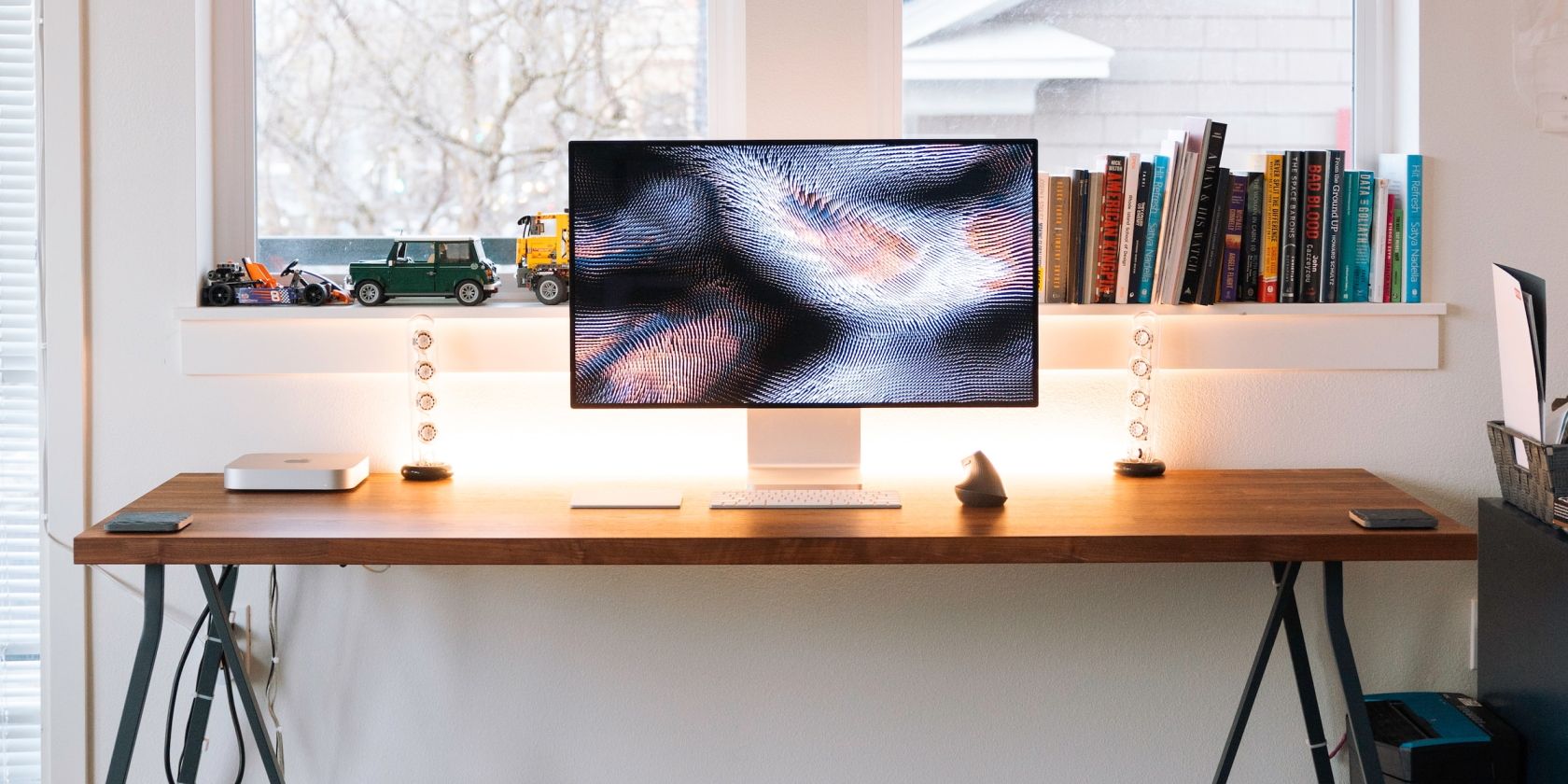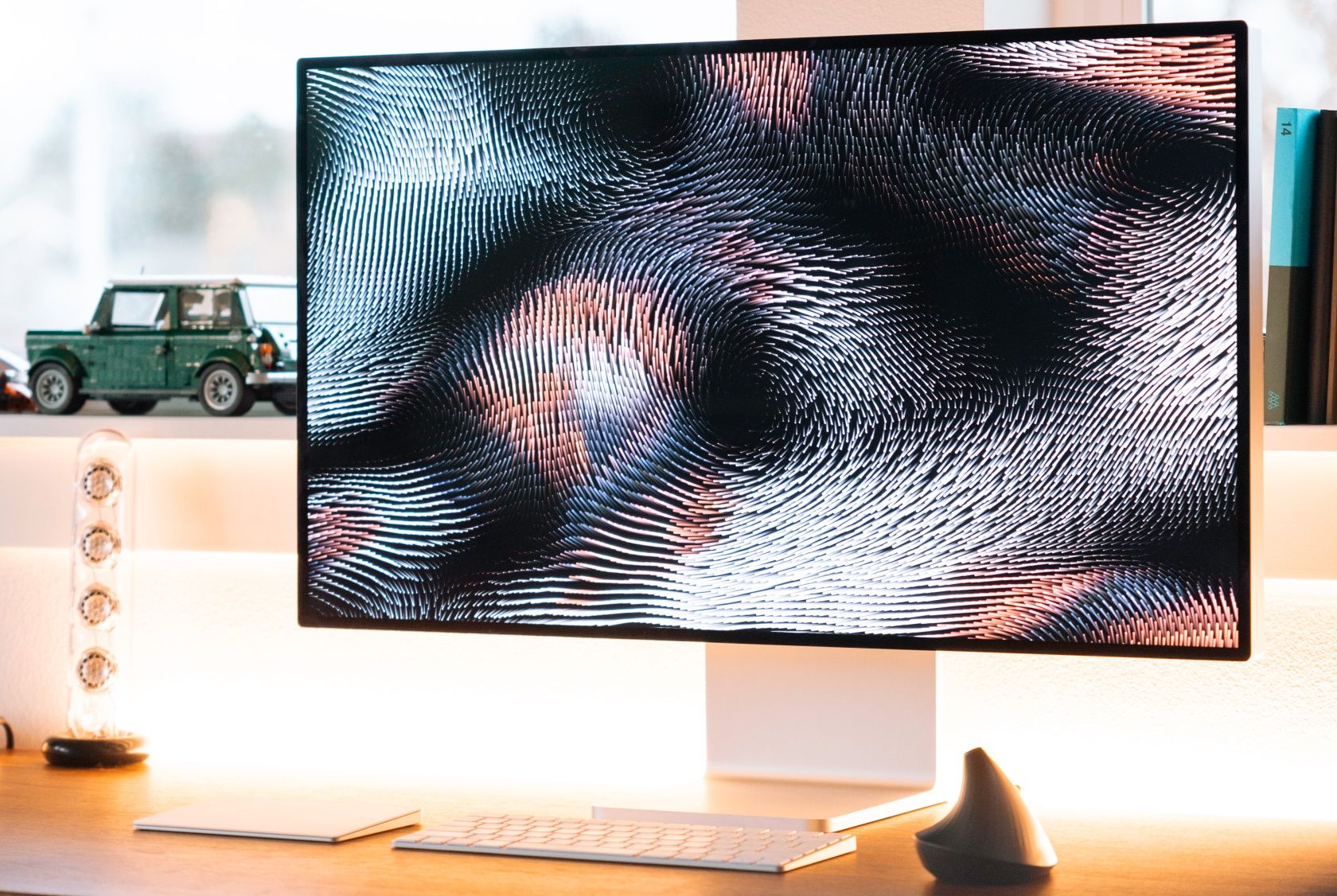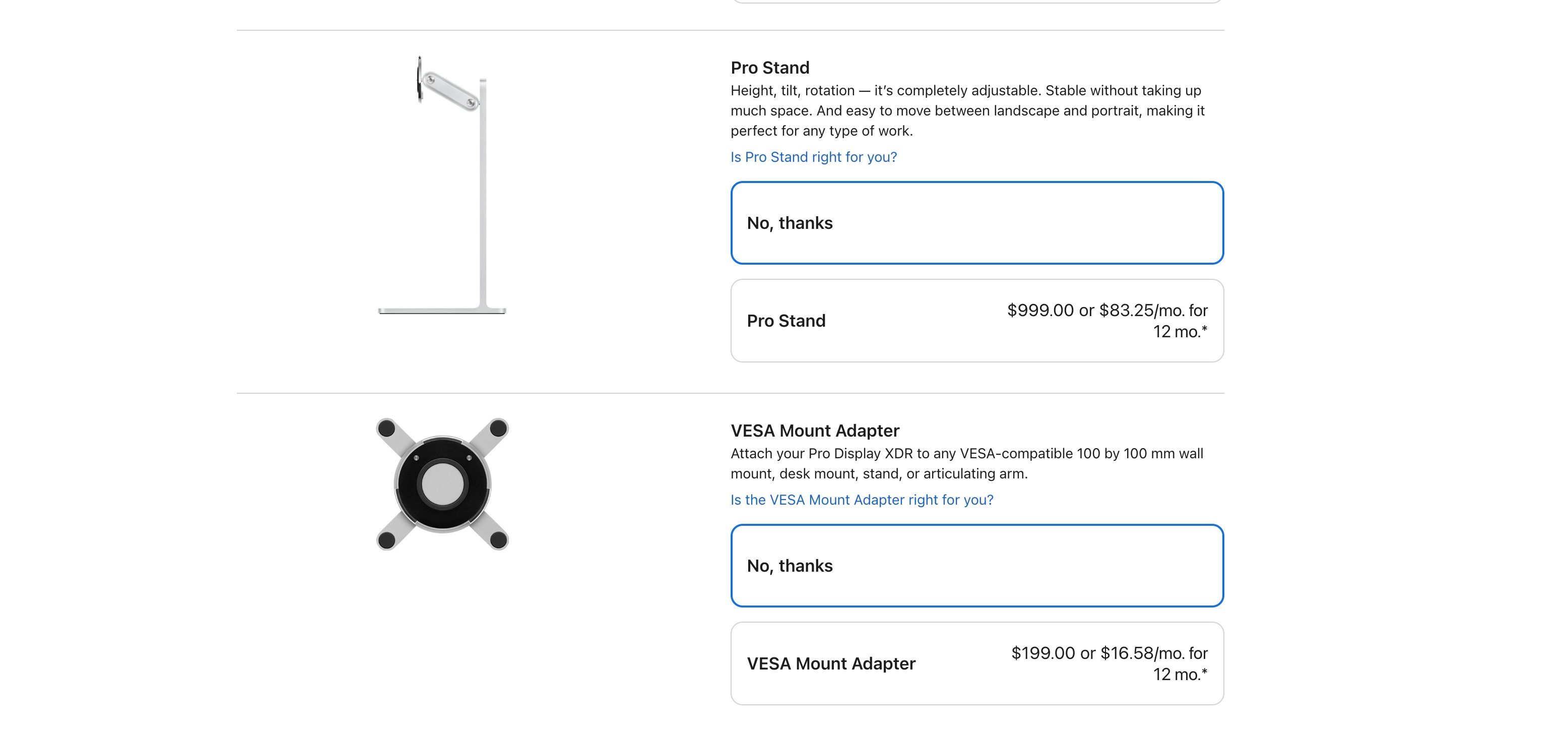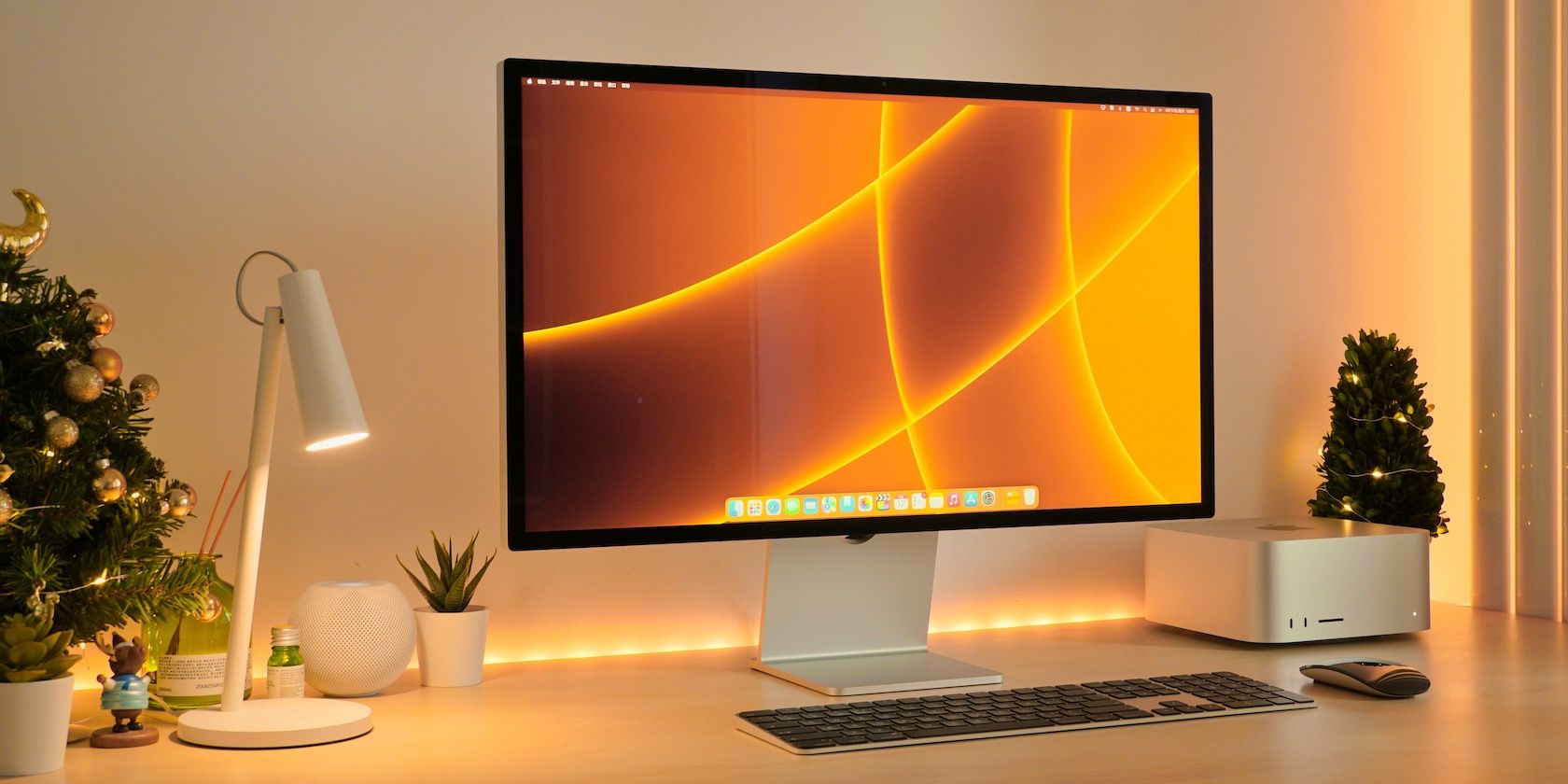Apple released the Pro Display XDR, the company's first monitor in years back in 201,9 at the annual WWDC event. Despite being a few years old, it is still Apple's top-of-the-line monitor that can burn a hole in your wallet.
At launch, it impressed many people since it has a modern design, extreme dynamic range, and a 6K resolution. While the product targets a niche market, there are many reasons someone shouldn't buy one.
7. Unreasonable Price
For starters, the Pro Display XDR starts at a substantial $4,999 price tag. That is expensive for a 32-inch monitor. For the price of one Pro Display XDR, you can buy three Apple Studio Displays (or several other third-party 4K monitors). So, if you prioritize having an efficient workstation, having multiple displays will be more beneficial than having Pro Display XDR.
It's also important to note that the high price tag doesn't include other parts of the monitor that are required, like its controversial $1,000 stand, which we'll get to in a bit. In addition to that, the nano-texture version costs an additional $1,000. So, if you want a matte version of the display that diffuses light to minimize reflections, it will cost you $6,000.
While the Pro Display XDR delivers excellent peak brightness and a high contrast ratio, it is unreachable for most people at the current price that hasn't dropped since its launch.
6. No High Refresh Rate
Many monitors on the market offer high refresh rates these days. High refresh rate screens are typical in gaming monitors since most games can support uncapped frame rates and improve motion clarity. Beyond that, Apple's own devices, such as the iPad Pro, iPhone 14 Pro, and the 14-inch/16-inch MacBook Pro offer 120Hz displays.
Even though the Pro Display XDR is Apple's top-of-the-line display, it still doesn't offer a high refresh rate. A high refresh monitor can benefit a professional workflow and provide a smoother user experience. There are considerable differences between frame rate and refresh rate; however, they do work together.
Your computer may be powerful enough to drive content at 120FPS, but if you have a display that's capped at 60Hz, you won't be able to see what it's truly capable of.
Apple's devices with the "Pro" moniker feature a high refresh rate display, except the Pro Display XDR. At nearly $5,000, the Pro Display XDR shouldn't be a 60Hz panel.
5. No OLED Technology
The Pro Display XDR uses a special LCD panel that resembles a mini-LED display, and it's unlike any other device in its class.
However, OLED panels are now more common among PC monitors since they provide an infinite contrast ratio, partly thanks to the pixels' ability to turn themselves off entirely, providing a true black color on the screen. This can be helpful for workflows that require color correction or accurate colors.
OLED displays also bring better viewing angles, which can be beneficial for a monitor desk setup if you want to turn your monitor to show someone something on the screen. If you're skeptical of OLED technology, look at the flagship smartphone market—most high-end models ship with OLED screens for the same reasons.
At its current price, the Pro Display XDR could benefit from an OLED panel to provide unmatched picture quality to users. And if you wish to learn more about the different display technologies, refer to our article covering the differences between LCD and OLED displays.
4. Stand and VESA Mount Sold Separately
One major drawback to the Pro Display XDR is that at $4,999, you only get the display. You will have to purchase Apple's VESA Mount Adapter or the Pro Stand separately, meaning you have to make another purchase to even use the monitor you just paid $5,000 for.
In addition to that, the prices for the VESA Mount Adapter and the Pro Stand are absurd. The VESA adapter costs $199, and the Pro stand costs $999. Even though the VESA Mount Adapter costs significantly less than the stand, you must go by the VESA mounting standards to ensure your monitor arm/stand can hold the Pro Display XDR. It isn't as simple as using the Pro Stand for tilt and height adjustment.
Having to pay nearly $5,000 for the display itself and then having to pay additional money to use the monitor is a hard pill to swallow for anyone who isn't working in a professional studio with a flexible budget.
3. The Pro Display XDR Targets a Niche Market
The Pro Display XDR isn't for everyone. Apple mainly created the display for high-end professionals with tasks such as colorwork, advanced photography, and more. It's a direct rival to reference monitors, which can cost tens of thousands of dollars. Unless you plan to take advantage of the Pro Display's technology, you are essentially overpaying for a display you can't fully utilize.
Combined with the Pro Display XDR's high price, it is clear that it is not intended for regular usage since the monitor costs more than most of Apple's desktop computer lineup. If you are looking for a great monitor that can work with macOS's built-in controls, other LG and Apple displays can be a better fit for you without breaking the bank.
2. Cheaper Alternatives
If your needs don't specifically fit the Pro Display XDR, multiple alternatives for the monitor exist on the market. The best option for a Mac display that features built-in macOS support is the Apple Studio Display. It resembles the display quality of a 5K iMac, features a similar design to the Pro Display XDR, and includes macOS integration.
Another possible choice is the LG UltraFine 5K monitor, which LG made in collaboration with Apple, meaning you can expect similar macOS integration. It offers a good quality 5K screen, built-in camera and speakers. It also supports the DCI-P3 color gamut and is height and tilt adjustable out of the box. Both displays will suit most users' needs at an affordable price.
1. No Built-In Camera or Speakers
If you plan to use the Pro Display XDR as your primary display, you will be disappointed to know that the Pro Display XDR doesn't have a built-in camera or speakers. You'll have to purchase them separately, which can be frustrating when you spend $5,000 on the monitor.
Fortunately, you can find quality cameras and speakers that can work with the Pro Display XDR, such as the Logitech 4K Pro Magnetic webcam and the Yamaha HS8 speakers. However, they add to the high price of the display.
To get the most functionality out of your desktop, the Pro Display XDR makes it more difficult by lacking these simple monitor features.
Think Again Before Spending That Much Money
While the Pro Display XDR is an impressive display, it certainly isn't for everyone, and the cost of the monitor makes it a dealbreaker for most Mac users.
With compelling alternatives like the Studio Display, it becomes hard to recommend the Pro Display XDR unless you belong to a niche market that needs the specifications.




